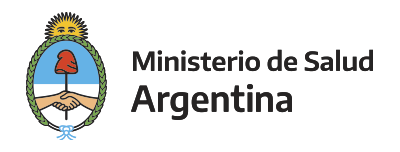Please use this identifier to cite or link to this item:
http://sgc.anlis.gob.ar/handle/123456789/2672| DC Field | Value | Language |
|---|---|---|
| dc.contributor.author | Scavuzzo, C. M. | es |
| dc.contributor.author | Scavuzzo, Juan Manuel | es |
| dc.contributor.author | Campero, Micaela Natalia | es |
| dc.contributor.author | Anegagrie, Melaku | es |
| dc.contributor.author | Aramendia, Aranzazu Amor | es |
| dc.contributor.author | Benito, Agustín | es |
| dc.contributor.author | Periago, Maria Victoria | es |
| dc.date.accessioned | 2025-08-25T14:23:50Z | - |
| dc.date.available | 2025-08-25T14:23:50Z | - |
| dc.date.issued | 2022-02-03 | - |
| dc.identifier.uri | http://sgc.anlis.gob.ar/handle/123456789/2672 | - |
| dc.description.abstract | In the field of landscape epidemiology, the contribution of machine learning (ML) to modeling of epidemiological risk scenarios presents itself as a good alternative. This study aims to break with the ”black box” paradigm that underlies the application of automatic learning techniques by using SHAP to determine the contribution of each variable in ML models applied to geospatial health, using the prevalence of hookworms, intestinal parasites, in Ethiopia, where they are widely distributed; the country bears the third-highest burden of hookworm in Sub-Saharan Africa. XGBoost software was used, a very popular ML model, to fit and analyze the data. The Python SHAP library was used to understand the importance in the trained model, of the variables for predictions. The description of the contribution of these variables on a particular prediction was obtained, using different types of plot methods. The results show that the ML models are superior to the classical statistical models; not only demonstrating similar results but also explaining, by using the SHAP package, the influence and interactions between the variables in the generated models. This analysis provides information to help understand the epidemiological problem presented and provides a tool for similar studies | es |
| dc.language.iso | en_US | es |
| dc.relation | Fundacion Mundo Sano | es |
| dc.relation | Instituto de Salud Carlos III | es |
| dc.subject | Shap | es |
| dc.subject | Shapley | es |
| dc.subject | Machine learning | es |
| dc.subject | Remote sensing | es |
| dc.subject | Hookworm | es |
| dc.subject | Ethiopia | es |
| dc.title | Feature importance: Opening a soil-transmitted helminth machine learning model via SHAP | es |
| dc.type | Artículo | es |
| dc.identifier.doi | 10.1016/j.idm.2022.01.004 | - |
| item.fulltext | With Fulltext | - |
| item.grantfulltext | open | - |
| item.languageiso639-1 | en_US | - |
| item.cerifentitytype | Publications | - |
| item.openairetype | Artículo | - |
| item.openairecristype | http://purl.org/coar/resource_type/c_18cf | - |
| Appears in Collections: | Parasitosis intestinales en Argentina | |
Files in This Item:
| File | Description | Size | Format | |
|---|---|---|---|---|
| 15. Infect Dis Mod 2022 SHAP STH.pdf | 3.62 MB | Adobe PDF | View/Open |
Page view(s)
138
checked on Dec 13, 2025
Download(s)
10
checked on Dec 13, 2025
Google ScholarTM
Check
Altmetric
Altmetric
Items in DSpace are protected by copyright, with all rights reserved, unless otherwise indicated.

